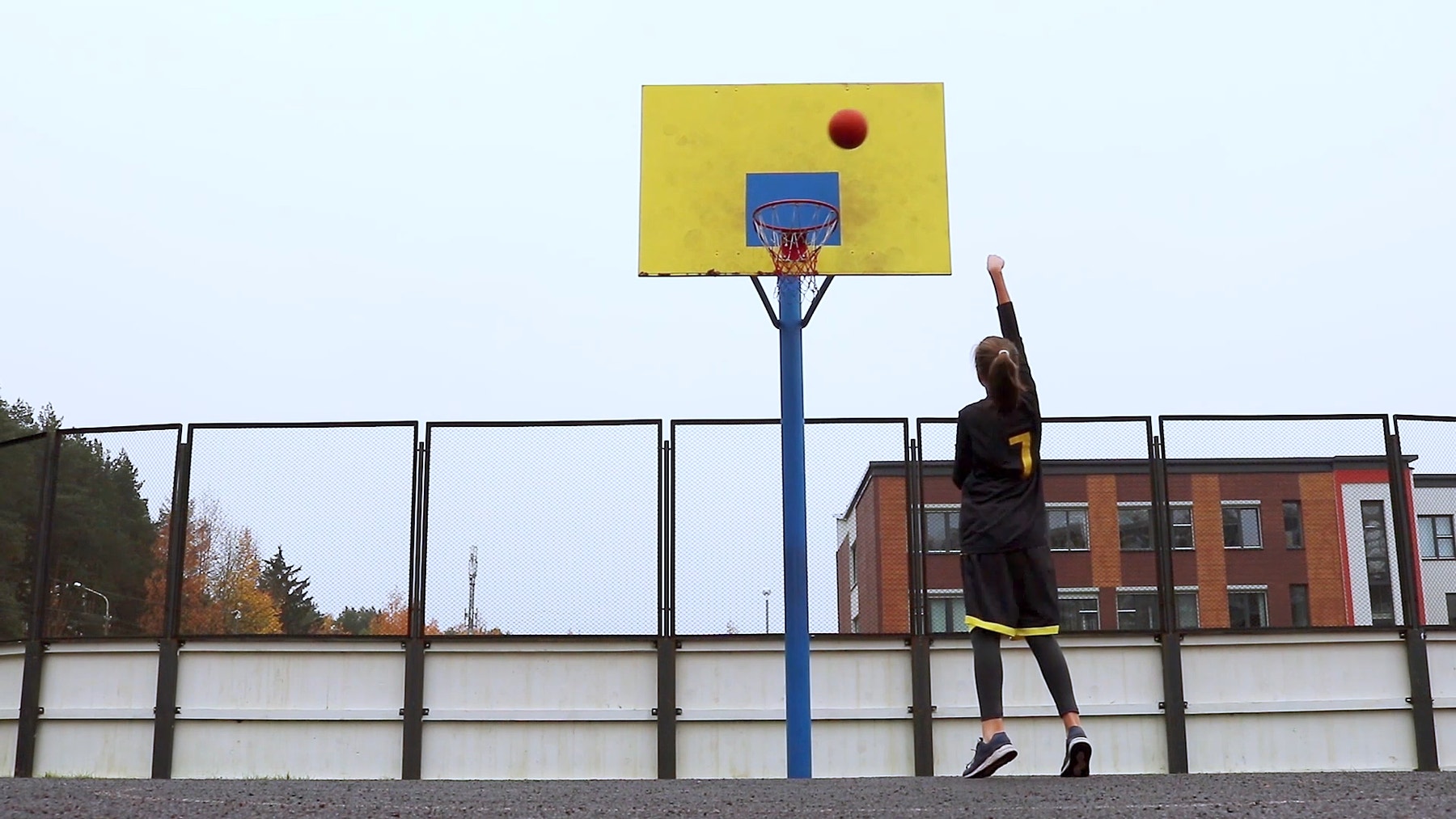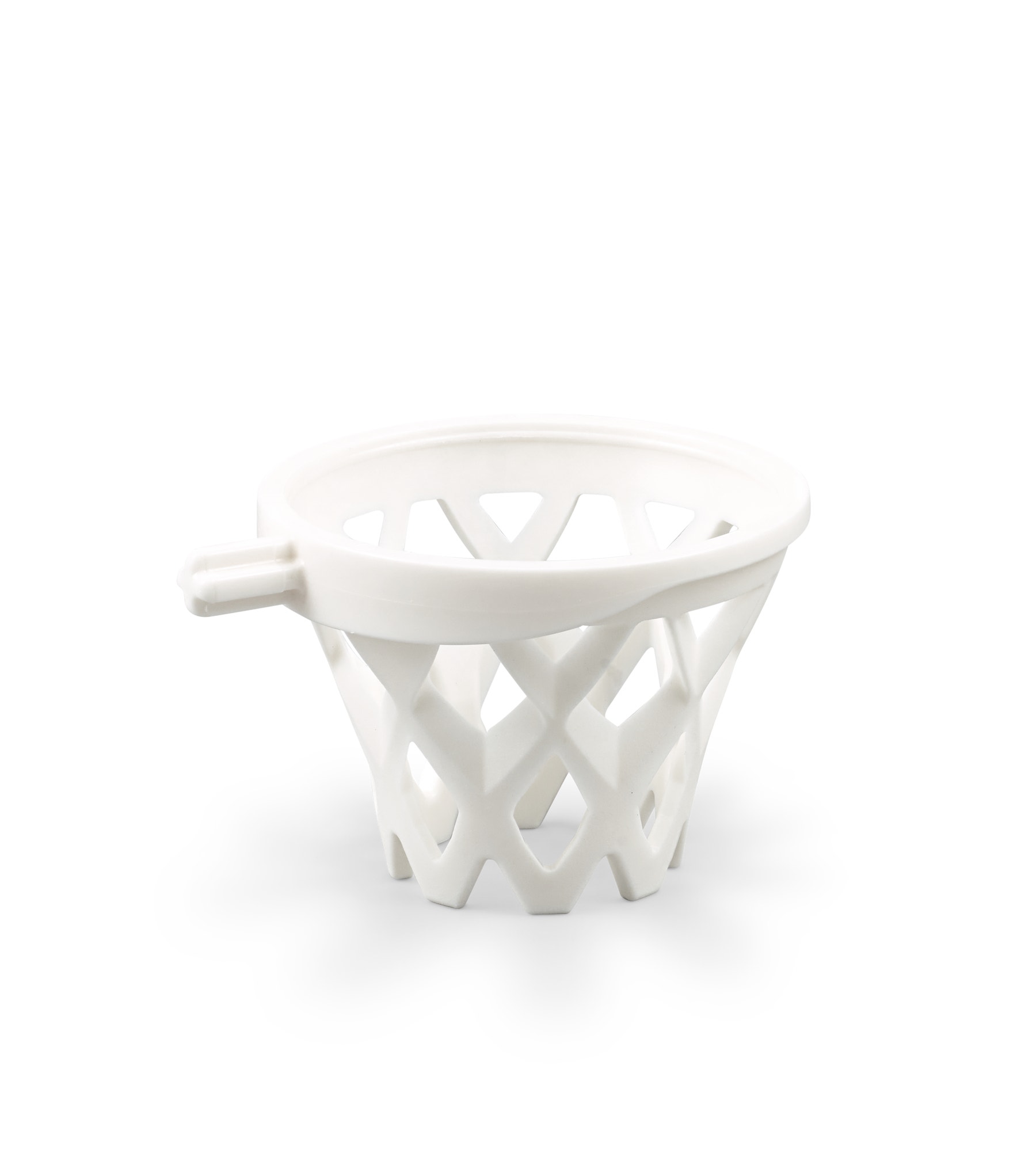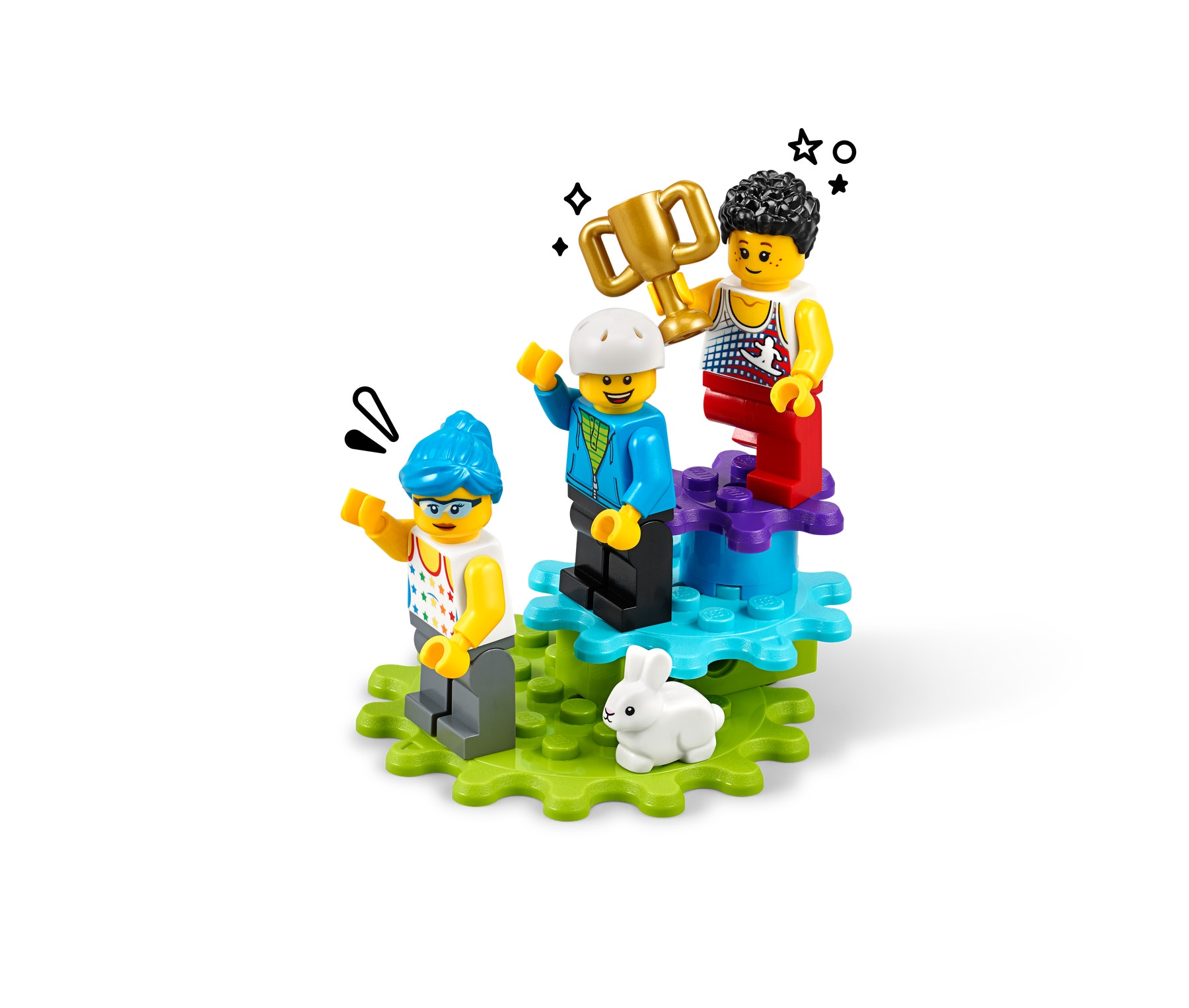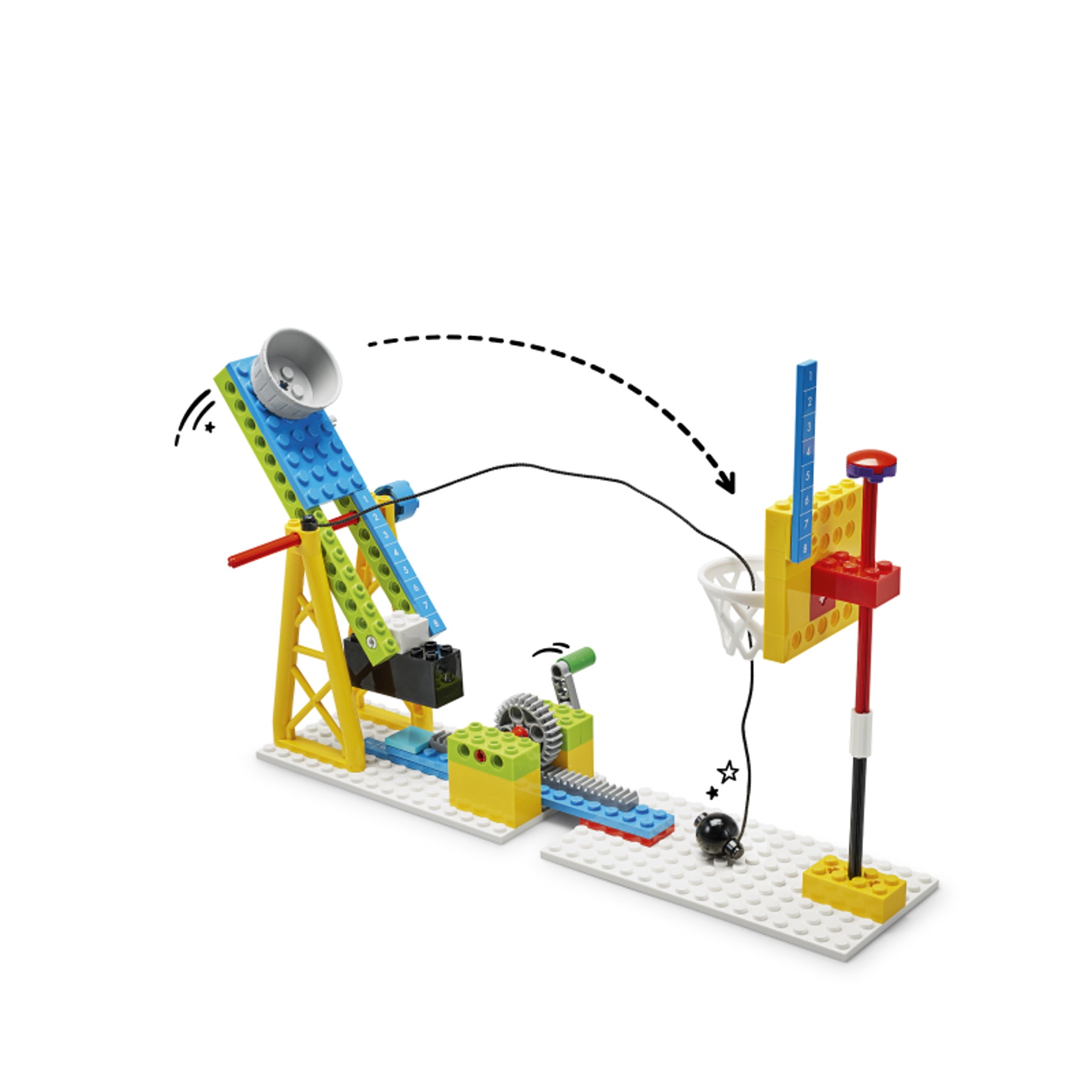Free Throw
Explore the motion of a basketball when scoring a three-point throw. Can you score a perfect basket every time?

Prepare
- Review the online pupil material. Use a projector to share this material with your pupils during the lesson.
- Make sure that you have covered ways of recognising patterns in motion in an earlier lesson.
- Consider the abilities and backgrounds of all your pupils. Differentiate the lesson to make it accessible to everyone. See the Differentiation section below for suggestions.
Engage
(Whole Class, 5 Minutes)
- Watch the pupil video here or access it via the online pupil material.

- Facilitate a quick discussion about which forces your pupils have seen in action when playing sports like basketball or volleyball.
- Ask questions like these:
- Which force*(s)* makes the ball move? (Push/Pull)
- Which force makes the ball come back down? (Gravity)
- What is a ‘three-pointer’? (A ‘three-pointer’ is scored from any basket shot taken from outside the three-point line.)
- Tell the pupils that they’re going to build a basketball model, which they will use in experiments to recognise a pattern in the motion of a ball.
- Distribute a set to each group.
Explore
(Small Groups, 25 Minutes)
- Have the pupils work in pairs to build the Free Throw model. Tell them to take turns, one partner searching for the bricks while the other builds, switching roles after each step has been done.
- You can find building help in the Tips section below.
Experiment 1:
- Have the pupils test their models to see if they can score a basket with the model set to pivot position ‘1’, throw distance ‘2’ and basket height ‘1’ on the blue numbered tiles.
- Ask them to record the results on their Student Worksheets (Teacher Support – Additional Resources).
- Now have them try to score again by increasing the throw distance to positions 4, 6 and 8.
- Remind them to record the results of each test.
Explain
(Whole Class, 10 Minutes)
- Gather your pupils together to share what they have learned.
- Ask questions like these:
- When was the force balanced/unbalanced? (When the throwing arm is still, the force is balanced. When it is let go, the weighted brick drops and the force on the ball will become unbalanced. The force will remain unbalanced until the ball and throwing arm have stopped moving).
- What makes the weighted brick fall? (Gravity)
- Why were you able to score whenever the basket height was set to position 1?
- What do you think would happen if you increased the height of the basket?
Experiment 2:
- Now ask your pupils to set the height of the basket to position 2 and try to score from throw distance positions 2, 4, 6 and 8.
- Tell them to record the results of each attempt in the second row of the table on their Student Worksheets.
- Encourage them to predict from how far away they will be able to score each time they change the basket height, using an ‘X’ to mark their predictions in the table.
- If they complete the column or can no longer score a basket, have them raise the height of the basket to position 3, 4, etc. and continue to record their results in the table until they can no longer score.
Elaborate
(Whole Class, 5 Minutes)
- Gather your pupils together to review and discuss their experiments.
- Ask questions like these:
- What patterns did you recognise in the motion of the ball as the distance changed for each basket height? (As the distance and height increased, it became more difficult to score a basket.)
- Hold up your table and look around the room. How does your table compare to the rest of the class?
- Were you able to predict what would happen next?
- Allow time for the pupils to disassemble their models, sort the bricks back into the trays and tidy up their workstations.

- Did you know that the LEGO Group now makes some LEGO® elements from plant-based plastic? Elements including trees, leaves, dragons' wings and basketball hoops are now made from sustainably-sourced sugarcane. By 2030, all LEGO elements will be made from sustainably-sourced materials.
Evaluate
(Ongoing Throughout the Lesson)
- Ask guiding questions to encourage them to ‘think aloud’ and explain their thought processes and reasoning in the problem-solving decisions they have made when building their models.
Observation Checklist
- Measure your pupils’ proficiency in describing the pattern in the motion of an object and how this pattern can be used to predict its future motion.
- Establish a scale that suits your needs. For example:
- Requires additional support
- Can work independently
- Can teach others
Self-Assessment
- Have each pupil choose the brick that they feel best represents their performance.
- Green: I think I can recognise a pattern in the ball's motion.
- Blue: I can recognise a pattern in the ball's motion.
- Purple: I can recognise a pattern in the ball's motion and use this pattern to predict its future motion. I can also help a friend to understand.
Peer Feedback
- In their teams, have the pupils discuss their experiences working together.
- Encourage them to use statements like these:
- I liked it when you…
- I'd like to hear more about how you…

Tips
Model Tips
- Show your pupils how to count the studs on the plates to help them place the bricks correctly. Point out that they should pay attention to the placement of the 2 yellow throwing arm supports on the white plate.
- Explain that the red axles indicate the variables that can be adjusted on the model (i.e. basket height, throw distance and pivot position).
- Mention that distance between the basket and the throwing arm can be increased by turning the crank handle at the centre of the model.
- Highlight that the string on the ball will help to keep it attached to the model.

Differentiation
Simplify this lesson by:
- Having the pupils try to score only from distance positions 2, 4 and 6
Increase the difficulty by:
- Asking your pupils to change the pivot point to ‘2’ and then record their observations in a new table
- Having the pupils set the basket height to ‘5’ and challenging them to modify their models to score a three-pointer from any distance between 1 and 8; this will involve some free-building
Extensions
(Note: This will require additional time.)
To incorporate the development of maths skills, and explore conventional units of measure, have your pupils hold a ruler to their models as they change the variables.
National Curriculum Maths: Ma3/3.1 Measurement
National Curriculum Maths: Ma3/4.1 Measurement
1:1 Hybrid Learning
Download the Personal Learning Kit lesson plan from the hybrid learning resources.
Teacher Support
The pupils will:
- Observe and measure an object’s motion to recognise a pattern
- Record data and use it to make predictions
- LEGO® Education BricQ Motion Essential Sets (one for every two pupils)
ACSSU076
Forces can be exerted by one object on another through direct contact or from a distance
ACSHE061
Science involves making predictions and describing patterns and relationships
ACMMG084
Use scaled instruments to measure and compare lengths, masses, capacities and temperatures




